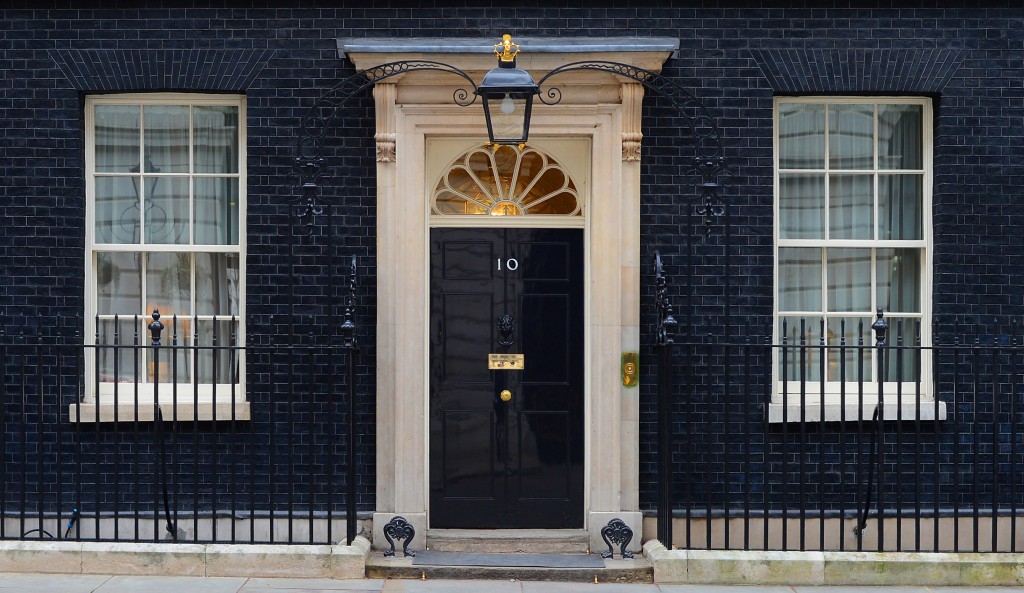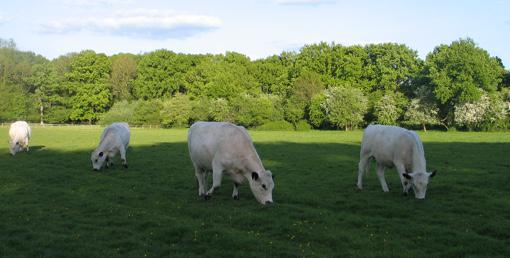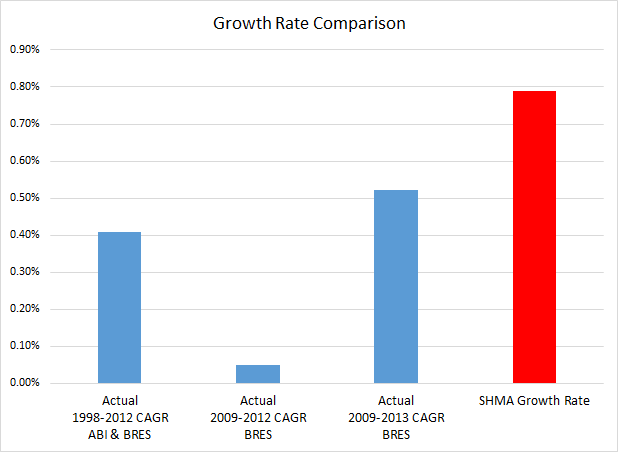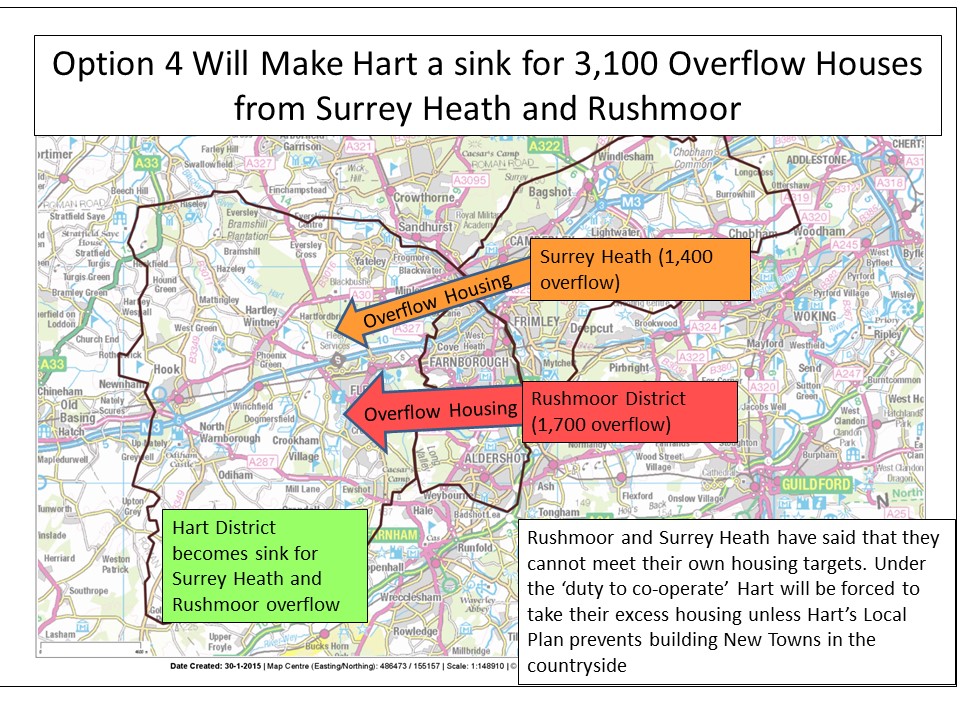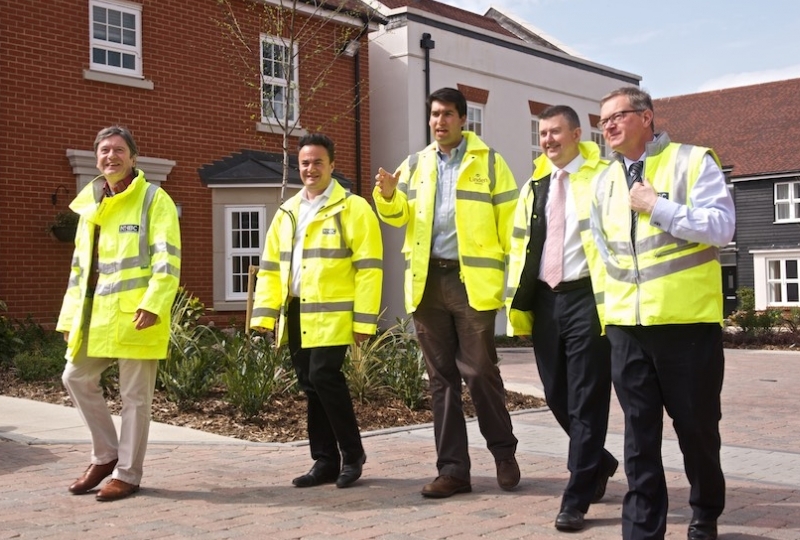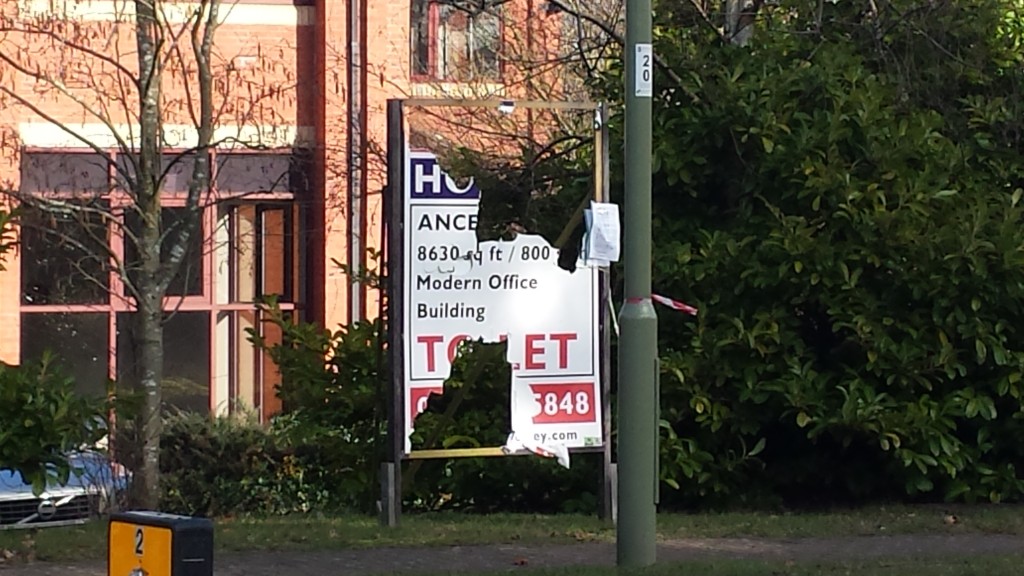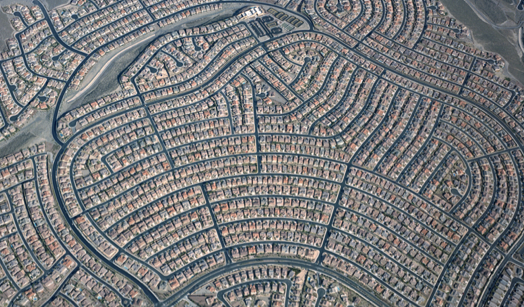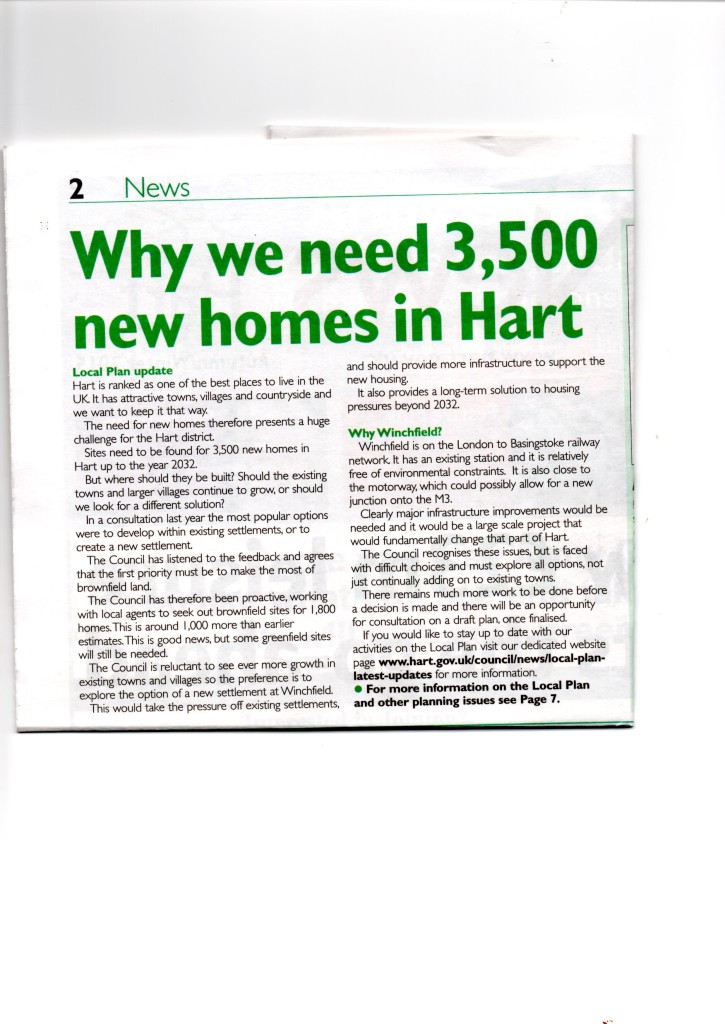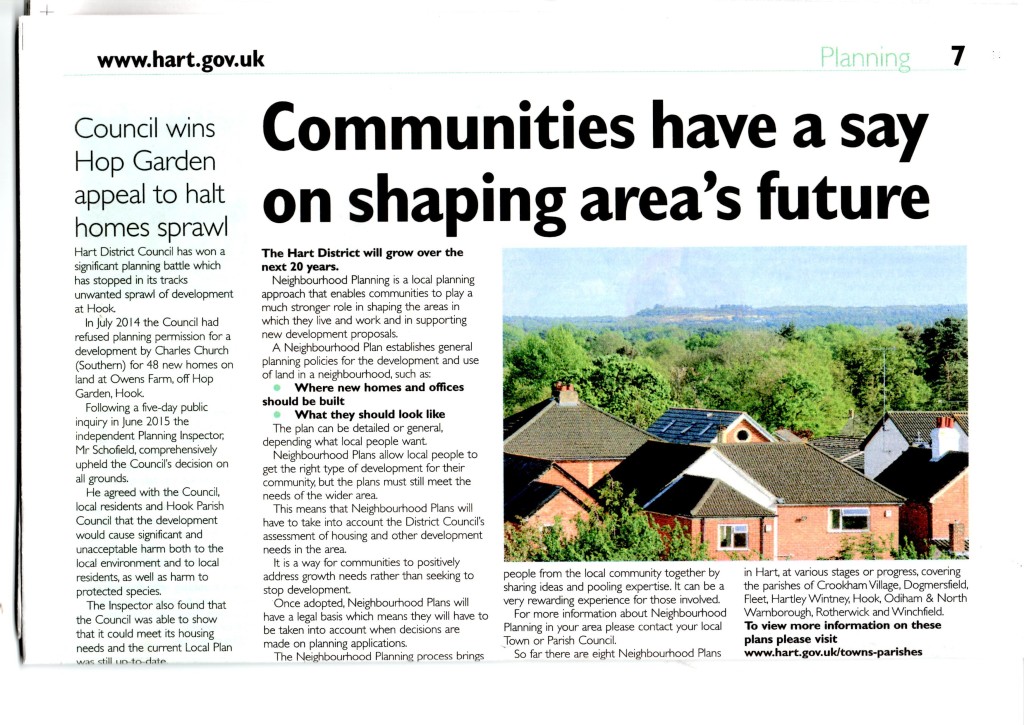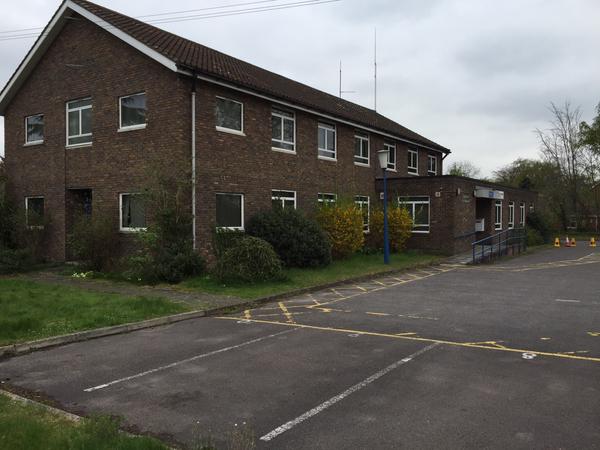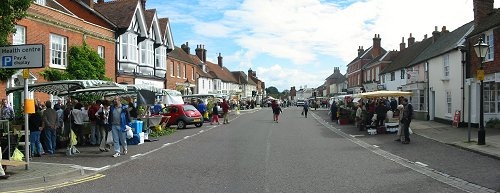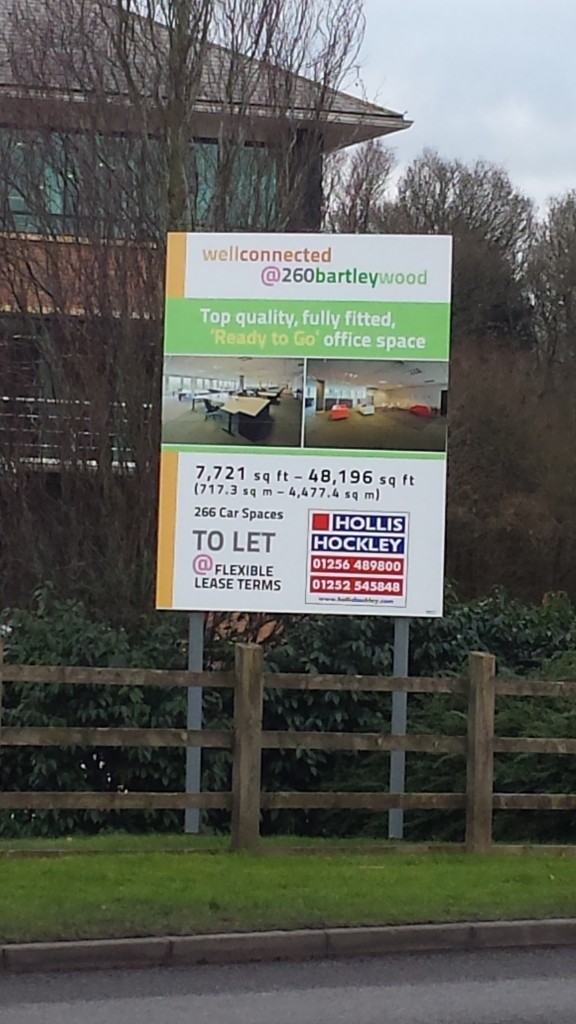
Bartley Wood Estate in Hook
New facts have come to light since Hart Council planning department put together their estimate of brownfield capacity which show that Hart’s remaining housing target can be met from brownfield development alone. Please support us in getting a brownfield only option included in the forthcoming consultation by attending the Hart Cabinet on 1 October where Hart’s response to the We Heart Hart petition will be agreed.
Last November, the council’s estimate of brownfield capacity over the entire plan period was around 750 units (taken from parts 1 and 3 of the SHLAA as per the FOI request we made) out of the then remaining 4,000 units to build (or grant permission for) up to 2032.
Since then, a number of interesting things have happened:
- An important study by Stonegate Homes has shown that brownfield capacity is much larger
- Planning permission has been applied for or granted on other sites that were either not in the SHLAA or were not counted as brownfield sites.
- New potential sites have come to light that were not included in the SHLAA
| Location | Number of Dwellings |
| Guillemont Park Phase 1 (not included as brownfield site in SHLAA) | 150 |
| Guillemont Park Phase 2 | 320 |
| Ancells Farm, Fleet | 370 |
| Bartley Wood, Hook | 200 |
| Fleet Road, Fleet | 220 |
| Bramshill House | 350
|
| Fleet Police Station | 50 |
| Extra dwellings at Landata House | 28 |
| Total | 1,688 |
All of the dwellings above were not included as brownfield sites in the SHLAA. Guillemont Park (Sun Park) was in the SHLAA but for a smaller number of units, and was shown in Part 2, which was not considered to include brownfield locations. Since last November revised permission has been granted at Landata House, Hook for 28 more dwellings than were included in the 5 year land supply calculation.
The Bramshill House and Fleet Police station sites were not included in the SHLAA.
The Stonegate report identified 370 units at Ancell’s Farm in Fleet, 200 units at Bartley Wood in Hook and a further 220 units on Fleet Road in Fleet.
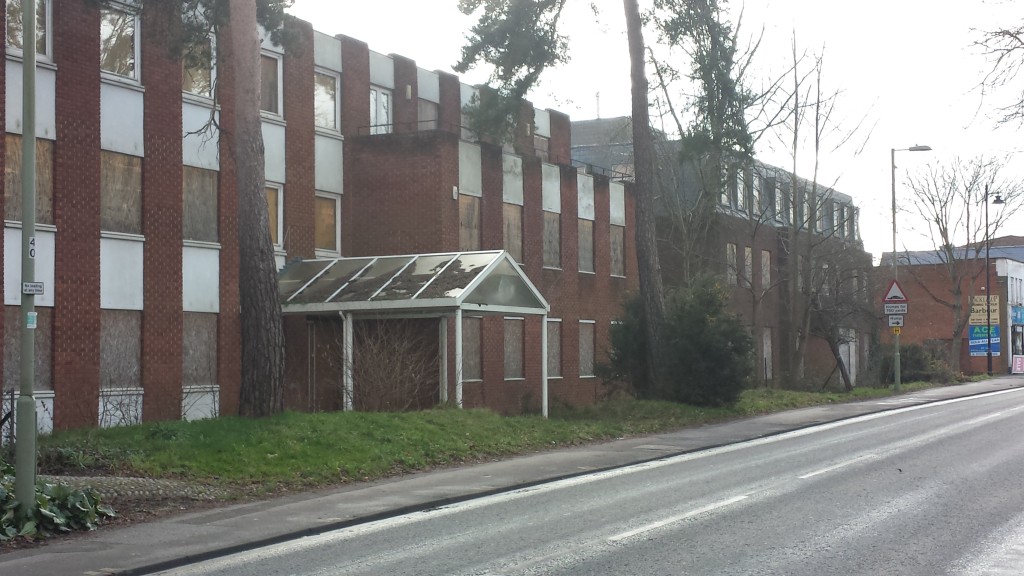
Derelict Offices in Fleet, Hampshire
However, the proposals for Ancells Farm cover only 7 of the 23 office buildings in the business park which shows that there is additional capacity there. Moreover, there are even more vacant office blocks in Hook so there is more capacity there too. Of course, across Hart, Surrey Heath and Rushmoor, there is currently 500,000 sq m of vacant office space, and forecasts for even more vacancies, so there is no danger of restricting jobs growth by redeveloping offices.
If the original 750 units were to be added to the 1,688 units identified above, then that amounts to a total of 2,438 potential units on brownfield. If it were possible to increase the density (from 30dph to a still reasonable 80dph in urban areas) on the original 750 units, the total identified capacity would rise to some 3,688 units.
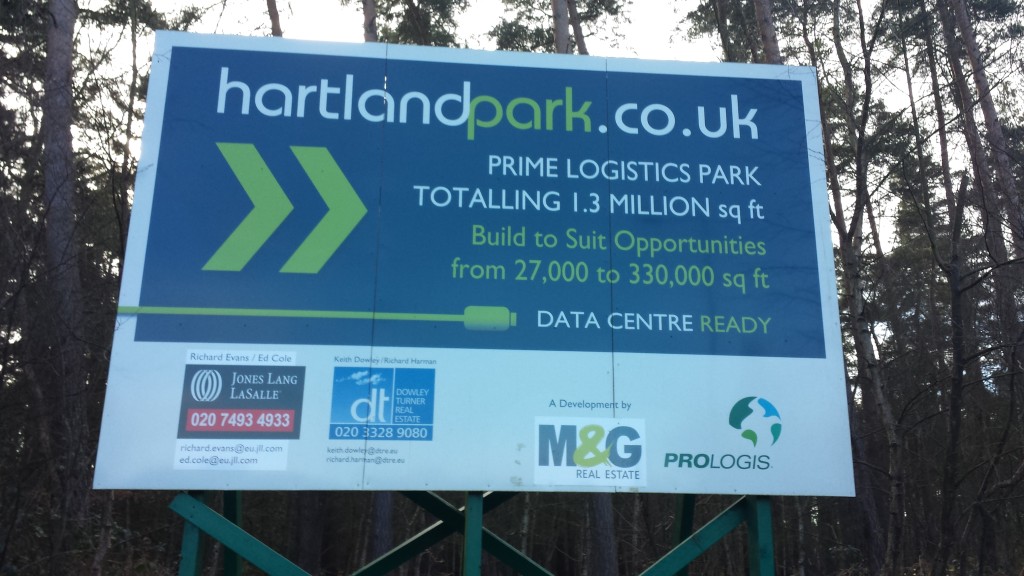
Brownfield site: Hartland Park (Pyestock) near Fleet, Hart District, Hampshire, warehouse development not started
Moreover, these figures do not include the massive potential of the 119 acre Hartland Park (or Pyestock) site where planning permission for a big warehouse was given years ago, but no activity is visible. Surely, the developers of this site want to earn some return on their investment and would change to residential.
The remaining requirement of 4,000 has of course been reduced by the unfortunate decisions to allow development at Watery Lane (300 units) and Hawley Park Farm (126 units) leaving the remaining allocation of at most 3,574.
It is clear that it is easily possible to meet the entire remaining of 3,574 from brownfield alone. It will take some creativity and energy, but a combination of increasing density and allocating more vacant offices is easily within reach, so we don’t need a new town and can protect our countryside.
We have put proposals to Hart Council to include a formal brownfield option in their forthcoming consultation on the Hart Local Plan. Please support us by coming along to the Hart Cabinet on 1 October where Hart’s response to the We Heart Hart petition will be agreed.
